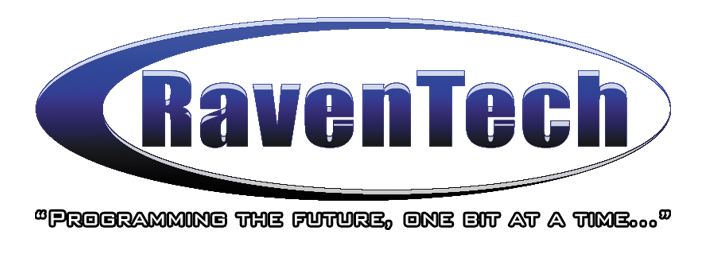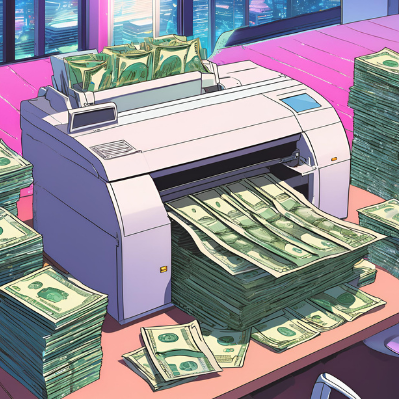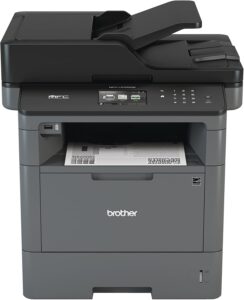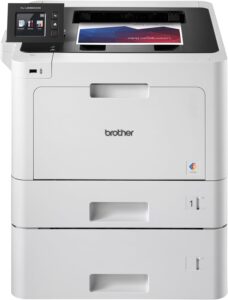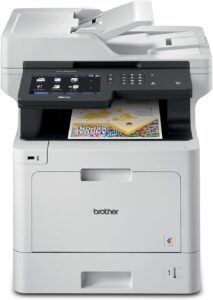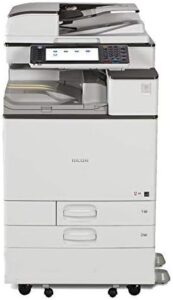Thinking about getting a printer? Did you also realize that it’s 2024 and that printing is so last century? Like, who really needs to print anyway? Are you printing a manifesto? Do you live in a shack in the woods? But seriously…
This article attempts to do two things: 1, make you reconsider actually buying, let alone printing anything, and 2, help you choose which printer to buy, should you decide to go vintage and use paper.
First, let’s talk about how the printing industry has always been a scam. Pretty much everyone from publishers to printer manufacturers. It’s an industry that literally spent more time and money on updating how they scam people than on the technology that’s actually doing the printing. Even today, companies like HP, Epson, Brother, are still trying to keep people on the hook by making poor quality equipment that requires professional repair or even replacement to ensure a steady revenue stream. They utilize a really fucked up version of DRM (Digital Rights Management) to try to force or restrict users in how they use their own hardware. Cartridges are electronically ‘expired’ before their time or before their contents are completely used, all in an effort to force users to spend more on consumables like ink and toner. Some manufacturers have even begun restricting the use of 3rd party consumables under the guise of ‘warranty protection’ to ensure that you don’t ‘damage’ your printer with non-genuine supplies.
With that said, there are still a few good options for folks who really insist on buying printers. Depending on what you’re going to be printing, and for what purpose, you will want to prepare yourself for having to drop a larger amount upfront to purchase a good printer to reap the rewards and savings, than that of a cheaper ‘amazing deal’ you find somewhere.
Ink or Toner?
There are primarily two types of printers for your general consumers in the world (not including 3D printers of course), those that use liquid ink and those that use a powder like material called toner. As much shit as I talk about printer companies, there are some advantages to buying genuine or good quality 3rd party supplies. Inks from the manufacturers usually are ‘formulated’ to work with the printer they’re made for. Part of this formulation is viscosity (important to ensure the flow of ink is consistent) and cleaning agents (also important in keeping the transmission lines clean and flowing). Outside of those two factors, ink is almost the same everywhere else. Toner has been around for a long long time, and really hasn’t changed much and is almost identical between manufacturers. Keep in mind, just as with ink, there are advantages to buying good quality (not necessarily genuine) toner. Toner at a microscopic level is actually bead like. Typically good quality toner will have very nice consistent beads of toner that helps ensure consistent layering of toner.
If you are going to be printing on photo paper or doing anything that requires a very large gamut of colors, an ink printer (preferably one with a diverse color cartridge set) will be your best bet. These are the most expensive to maintain due to the number of cartridges and cost of supplies. If however, you just need black and white printing or basic color printing (keep in mind, you can get pretty good color images from toner) then you can use a toner based printer. Also, to be clear, toner based printers are what we would normally call ‘laser’ printers, but I would rather refer to them by the medium used to print as opposed to a core component.
Pros and Cons
Ink |
Toner |
|
Medium Longevity |
Expires, dries out | Does not dry out and is used up per page of printing |
Cost of Medium |
Usually more expensive per ounce than toner | Can be as expensive as ink if you are purchasing genuine supplies, cheaper if you purchase quality 3rd party toner |
Consumable Maintenance |
Usually just the cost of ink and paper. Some models require replacing a used ink container, though some can simply be cleaned out | Usually just the cost of toner and paper, however, some models after a high number of prints will require drum replacement |
Repairs |
Other than rubber rollers, most other parts are not easily replaceable/available due to cost. Unless you purchase an industrial ink printer, repair are not usually worth the cost | Depending on the model, may require rubber rollers, laser unit, fuser unit, used toner cartridge replacement. However, these parts tend to last thousands of prints before needing replacement, except for rollers which are typically rated for a few thousand pages prior to needing replacement. Typically, after these replacements, the printer quality is ‘like new’ |
Resolution (DPI – dots per inch. Keep in mind that the human eye can typically make out about 300 DPI) |
Around 600 DPI, 4,000 DPI for higher end models | Usually capable of 600DPI if not more. Laser resolutions can typically go higher than ink due to the nature of ink and droplet size as opposed to the smaller size of toner beads |
Printing Considerations
When choosing between models, keep the following in mind:
If you are printing or plan on printing hundreds of pages, mostly documents, maybe some in color, choose a color laser printer.
If you are printing photos for fun, choose an ink printer and depending on your financial appetite, choose one that can replicate as many colors as you need.
If you print rarely, choose a laser printer multi-function. Toner does not dry out and will last you forever, and at least you can make use of the scanner feature for scanning documents.
If you have a business, consider investing into a quality used business class all-in-one printer like a Ricoh MFP. These typically can handle a huge workload, have multiple paper trays to allow various sizes of medium for printing, can offer ‘finishers’ that sort, staple, hole punch as needed. Leasing can also be cost-effective depending on your business needs.
Printing Partial Pages
If you require printing partial pages, like 1/2 page or 1/3 page print outs (like appointment cards or passes), keep in mind that laser printers don’t really do partial pages. Due to the mechanical aspect of the laser printing process (drum rotation cycle), whether you print a 1/2 or 1/3 page still equals 1 full page print to a laser printer. In fact, some would argue that you waste more toner by printing partial pages or pages with mostly white space due to the fact that the toner is rolled out across the drum equally each cycle. Any toner not fused to the page at the time of printing gets collected into the waste toner cartridge. For these types of scenarios, consider a specialty printer like a thermal/label printer.
Note on repairs for DIY’ers
If you’re like me and like to fix everything yourself, keep a few things in mind when choosing a printer model:
Pick a model that allows for repairs. Some manufacturers setup roadblocks to help ensure that they and their ‘authorized partners’ have a place in your repair process. This means that some units actually require specialty software to reset or re-enable parts after repair. Be sure to research which units are easier to repair.
If you plan on repairing a laser printer, you should know that laser printers have very high voltage (1,000+ Volts) inside as well as parts that can be very hot if they have not been given a chance to cool. The voltage is needed to create a difference in charge between the drum and paper. Heat is used to ‘fuse’ the toner to the paper. You should probably learn the basics of how laser or toner printing works to ensure that you can properly troubleshoot and replace the correct part, otherwise you’ll replace unnecessary parts at your cost.
Cost Differences Between Models
When you’re looking around at different printer models, you’ll probably notice that there seems to be a strange difference between two seemingly similar models from the same manufacturer. Printer manufacturers had to figure out how best to scam people while also providing a reasonable ROI to businesses. Unfortunately, it’s hard to have a good ROI AND be able to scam someone, so what most manufacturers do is make separate models for consumers and businesses. Typically, the business versions are going to cost you more up front, but will usually have the best return on investment, due to longer life parts, cheaper consumables, etc, while the models targeted at home users, will be really cheap up front, but with lower quality construction and expensive consumables. For example, a consumer grade laser printer may utilize a toner/drum combo cartridge. The idea is that you end up replacing the printing drum and toner every time you replace your toner cartridge. This obviously makes a more expensive cartridge, since now your cartridge has to contain a printing drum (which usually can handle 1,000-2,000 pages before needing replacement), while the toner cartridge supplied can maybe print 500 – 1,000 pages. Business targeted units will typically make these parts more independent of replacement so that repairs can be very targeted.
Workhorse Printers
Every once in a while, a workhorse printer is born. The elders wrote about these in our scrolls and the prophecies hold that every manufacturer will, occasionally be blessed with a printer that, despite a users best efforts, will not fucking die. Anyone who had a HP Laserjet 4100 series will tell you that their printer probably outlived most of the users friends and family.
Where and Where Not to Buy
Costco, as much as I have an unhealthy obsession with this company, is not always the best place to buy this kind of equipment. Most of the time, their target audience is going to be home users, which also in turn means home consumer grade equipment. But it doesn’t hurt to check their stock and see if they have the make/model you want.
Amazon can be a great place to buy, just be wary of any items that appear cheaper because they come with ‘auto-refills’ or some other subscription deal.
Also, HP is one of the manufacturers who is really working hard to sell restricted hardware to consumers under the guise of ‘guarantees.’ Just keep in mind that any HP model you look at that features the ‘Jetintelligence’ feature is really not a feature, but rather a hardware lock that prevents users from using 3rd party consumables. In fact, not only will the printer not accept 3rd party cartridges, but certain features will be disabled.
Recommendations
|
Brother MFCL 5705DW
Starts at $410 Black and White 2-sided printing, copying, and color scanning |
Good for home and small business with light duty printing requirements. Scans full color, copies black and white, and sends faxes to those stuck in the past. A larger capacity second tray can be added as a stand to give you more paper capacity or allow for two different types of media. |
|
Brother HL-L8360CDWT
Starts around $550 Color 2-sided printing with dual trays |
Good for small to medium businesses with medium duty printing requirements. Great for either having more paper capacity or for hosting two different print mediums. |
|
Brother MFC-L8905CDW
Starts around $770 Multi-Function Color Laser Printer |
Good for small businesses with light duty printing requirements. Does 2-sided color copy and printing, scanning, and if you still know people in the 80’s, you can send them a fax too! Supports wireless networking and network scanning |
|
Ricoh Aficio MP C4503
Starts around $2,700 renewed Multi-Function Color Laser Printer |
Good for medium to large businesses with medium to heavy printing needs (500 – 1,500 pages per month) Does 2-sided color copying and scanning, printing |
